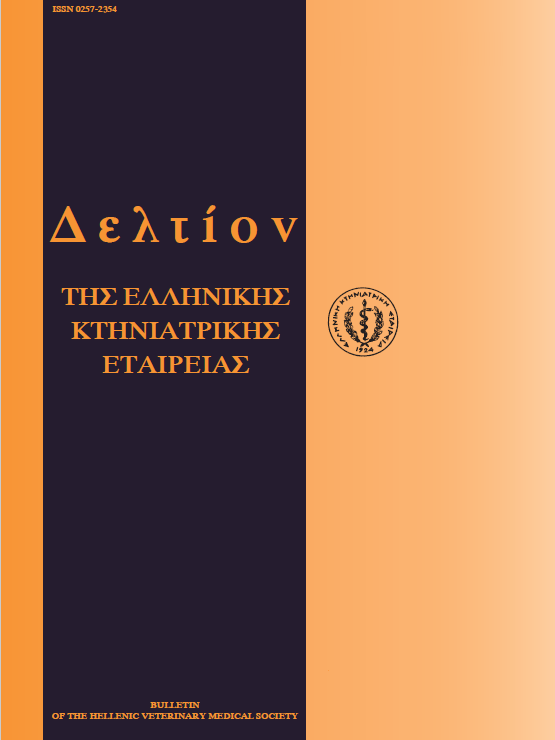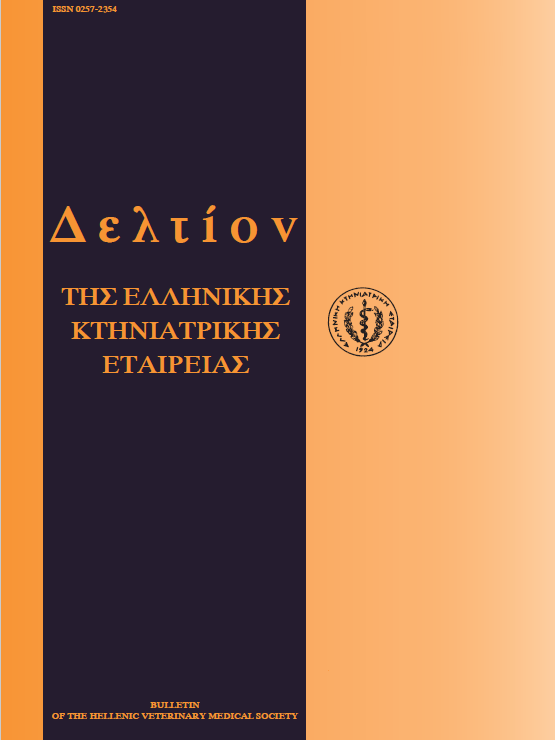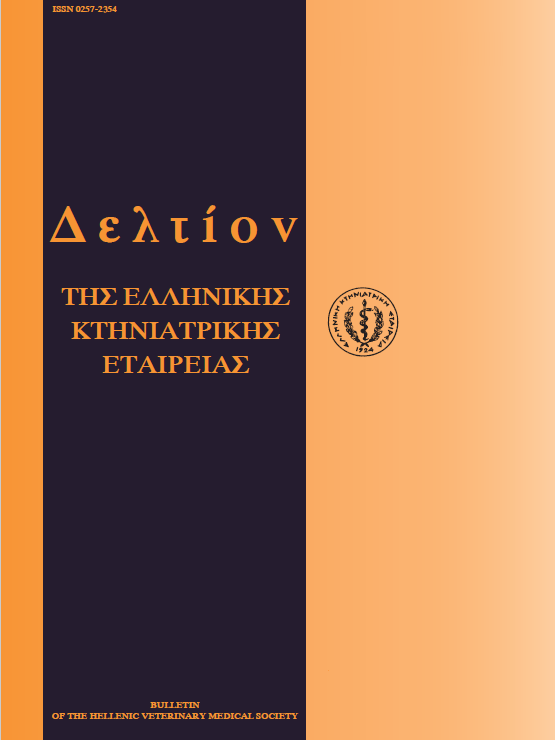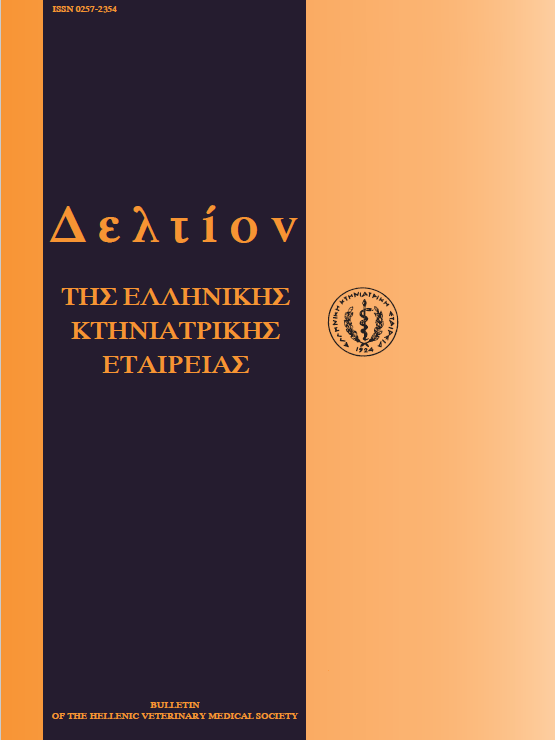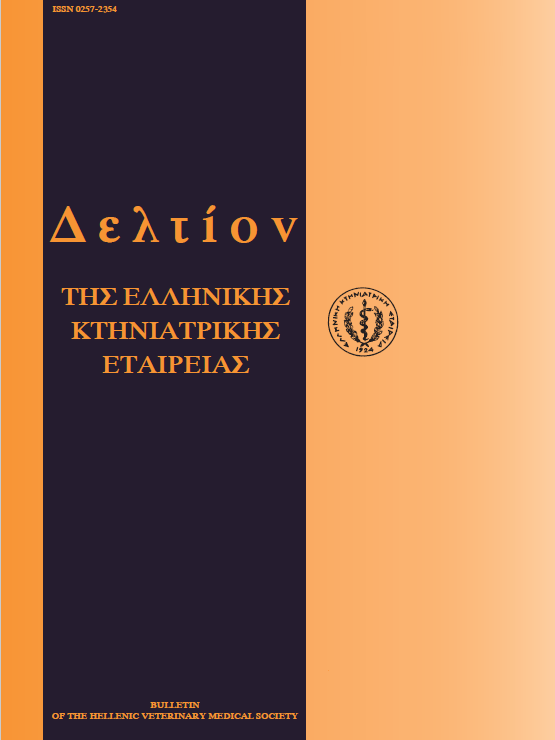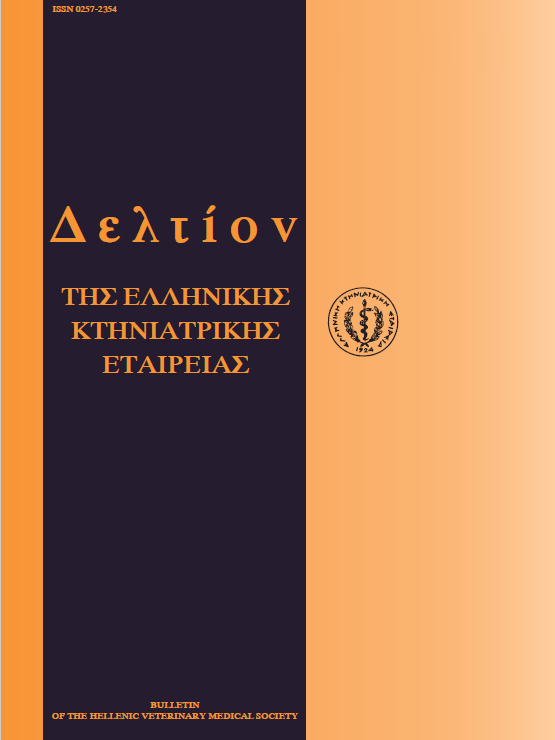Study of pathological lesions in rats after the experimental administration of Lindane
Résumé
In this experimental study, the lesions that are caused from the chemical substance Lindane were studied. Sixteen rats were used as experimental animals. The substance was orally administered, with food, to 10 rats (5 females and 5 males) in a dose of 8,2 mg/kg b.w./3 days during the first 10 days and in a dose of the 33 mg/kg b.w./ 2 days during the following 40 days. The remaining 6 rats (4 females and 2 males) were used as controls. The mainly clinical symptoms which were observed in the experimental animals, in the end of the experimentation, were anorexia, lethargy, hypothermia and muscular rigor. All the rats were sacrificed 5 days after the administration of the last dose of the substance and they were autopsied. In the macroscopical examination oedema and vascular hyperhaemia were observed in the brain. In the histological examination spongiosis of the white matter of the brain, interstitial pneumonia, oedema and loss of the cross striation of the cardiac muscle cells, coagulative necrosis of individual groups of hepatic cells and degeneration of the epithelial cells of the urinary tubules were detected. In conclusion, when Lindane is administered in subtoxical doses for a long period of time it is possible to cause damages to the organism of the experimental animals, which are located mainly in the brain and secondary in the liver, the kidneys and the other organs.
Article Details
- Comment citer
-
PAPAIOANNOU (Ν. ΠΑΠΑΪΩΑΝΝΟΥ) N., KELLER-SAMOUILIDOU (ΓΚ. ΚΕΛΛΕΡ-ΣΑΜΟΥΗΛΙΔΟΥ) G., LEKKAS (Σ. ΛΕΚΚΑΣ) S., KOTSAKI-KOVATSI (Β. Π. ΚΩΤΣΑΚΗ-ΚΟΒΑΤΣΗ) V. P., & KOVATSI (Α. ΚΟΒΑΤΣΗΣ) A. (2018). Study of pathological lesions in rats after the experimental administration of Lindane. Journal of the Hellenic Veterinary Medical Society, 49(1), 39–43. https://doi.org/10.12681/jhvms.15741
- Numéro
- Vol. 49 No 1 (1998)
- Rubrique
- Research Articles

Ce travail est disponible sous licence Creative Commons Attribution - Pas d’Utilisation Commerciale 4.0 International.
Authors who publish with this journal agree to the following terms:
· Authors retain copyright and grant the journal right of first publication with the work simultaneously licensed under a Creative Commons Attribution Non-Commercial License that allows others to share the work with an acknowledgement of the work's authorship and initial publication in this journal.
· Authors are able to enter into separate, additional contractual arrangements for the non-exclusive distribution of the journal's published version of the work (e.g. post it to an institutional repository or publish it in a book), with an acknowledgement of its initial publication in this journal.
· Authors are permitted and encouraged to post their work online (preferably in institutional repositories or on their website) prior to and during the submission process, as it can lead to productive exchanges, as well as earlier and greater citation of published work.

